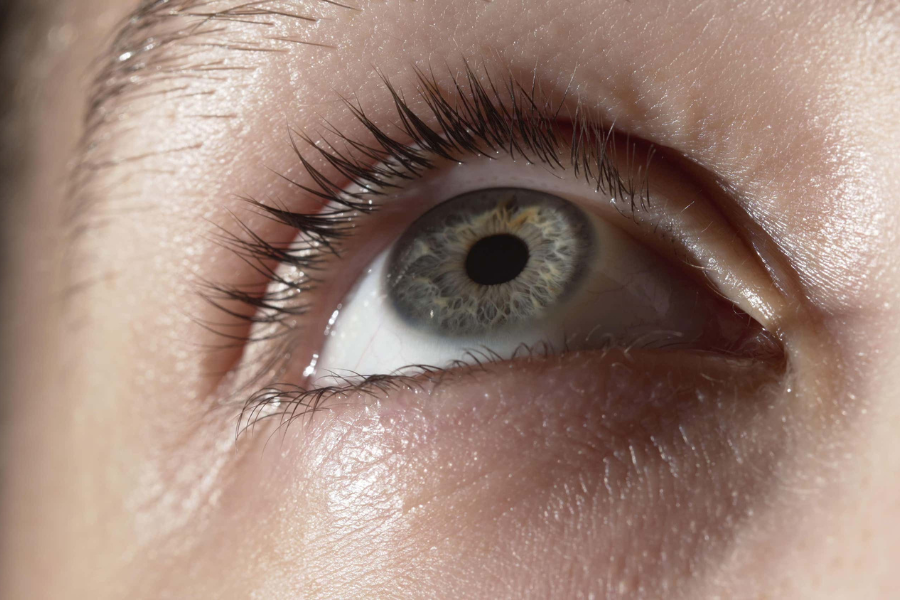Why won’t my eyes stop watering?
A streaming eye is pretty annoying, so what could be causing it?
If you have an eye that just won’t quit watering, you may be desperately trying to work out what is wrong and how to make it stop.
With spring around the corner, hay fever may be your first thought – despite the fact warmer weather still feels a way away. So, what’s going on?
“There are many potential causes of a leaky eye, including allergy, infection, a scratch to the cornea or something in the eye, eyelid problems, blocked tear duct, dry eye or Bell’s Palsy, which causes temporary weakness on one side of the face,” says Dr Clare O’Donnell, optometrist and Head of Optometry at specialist eye hospital group Optegra.
However, O’Donnell says a watering eye can also be a common sign of hay fever.
View this post on Instagram
“Hay fever commonly causes allergic conjunctivitis, as well as other well-known symptoms like a runny nose,” she explains. “Allergic conjunctivitis affects about one in five adults, so it’s one of the most common eye problems. It occurs when an allergen – for example, grass pollen – stands on the surface of the eye and starts to cause an allergic reaction.
“The reaction includes the release of histamine into the tears and this causes redness and swelling of the conjunctiva, watering and itching.”
If the pollen count is up, hay fever may be striking early.
“It can be treated with anti-allergy drops or antihistamine eye drops,” says O’Donnell. “Sometimes tablets can also be helpful, and these will usually control other hay fever symptoms.”
Here some other possible watery eye causes to keep in mind…
Dry eye disease
Tania Cork, a pharmacist and member of Théa UK’s EYE (Expert on Your Eyes) team, says dry eye disease can also cause watery eyes.
“Dry eye disease occurs when the eyes don’t produce enough tears, or tears dry up quicker than usual. Despite a likeness to hay fever symptoms, dry eye patients describe a stinging or burning sensation, rather than itchiness,” Cork adds. “They also experience sensitivity to light and may complain of foreign body sensation [feeling like something is in your eye].”

It could be time to see your optician
The main distinction between eye symptoms caused by hay fever and dry eye disease is “that they have different underlying causes – and community pharmacists are well-placed to help patients find the root cause,” says Cork.
“Lifestyle factors can significantly contribute to dry eye disease, with common causes being prolonged screen time, wearing contact lenses, make-up, air pollution and smoking.”
Eye infection
O’Donnell says a watery eye can also be a sign of “infections like viral conjunctivitis, or more seriously an infection of the cornea, which can be very painful and sight-threatening”.
If there’s a chance you may have an infection, O’Donnell says it’s important to get this checked by a medical professional as soon as possible, as you may need a specific treatment and advice on managing it.
A scratched cornea

You may have scratched your eye
Watering eyes can also be caused by an “abrasion – scratch – to the cornea, due to something in the eye”, says O’Donnell.
You may not be able to see the scratch yourself, so it’s important to get this checked by a professional as quickly as possible.
A drooping eyelid
Another possible cause of a watery eye is that your “eyelid is drooping away from the eye, or there are other problems with the eyelid,” says O’Donnell.
If this is the case, your doctor should ” investigate the cause,” O’Donnell adds. “Treatment may involve a minor surgical procedure to rectify.”
Bell’s palsy
Bell’s palsy is a condition “which causes temporary weakness on one side of the face,” explains O’Donnell. In some cases, this can come on quite suddenly, causing one side of the face to appear drooped and paralysed – which can also affect the eyes.
With any form of facial paralysis or drooping, it’s important to seek medical attention quickly. As O’Donnell points out, it’s vital “to rule out other causes of facial drooping, and care must be taken to avoid the cornea drying out if the eyelids don’t close properly”.
Plus, while Bell’s palsy is usually temporary, getting treatment quickly can help.
The Press Association
Latest posts by The Press Association (see all)
- 5 new books to read this week - March 26, 2025
- 6 things a physio wishes people over 60 would stop doing - March 25, 2025
- NHS reminder to 7.5m people as Covid-19 jab booking system opens - March 25, 2025
- The truth about cholesterol – what you need to know - March 25, 2025
- Prince William calls Dame Mary Berry a ‘national treasure’ in 90th birthday message - March 24, 2025




















